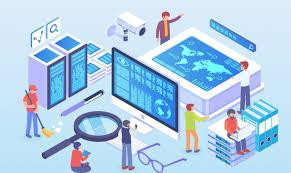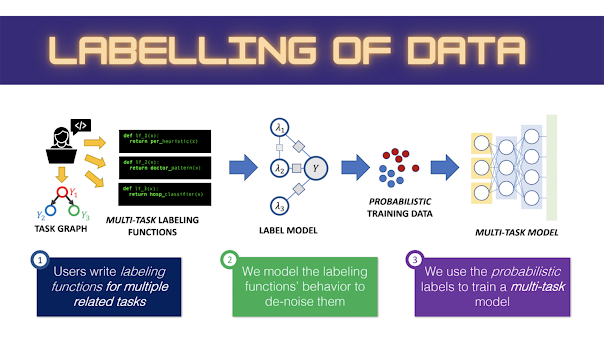The positive side of choosing the right data labeling company

Introduction
Data labeling is a process that classifies unlabeled data in machine learning. It includes photos, text files, and videos. To give the data context, a machine-learning model can learn from it by adding one or more informative labels. For example, labels might indicate whether a photograph depicts a bird or an auto, what words were used in an audio recording, or if there is a visible tumour on an x-ray. Data labeling is required for various uses, including speech recognition, computer vision, natural language processing, and computer vision.
Supervised learning is an option in many machine learning models. It uses an algorithm to map one input and one output. Supervised learning requires a labeled collection of data from which the model can learn and make smart judgments. Asking for opinions about unlabeled data is a common way to begin data labeling. For example, labellers may be required to tag all pictures in a collection with "does this picture contain a bird?" Tagging can be as simple as a yes/no answer or as complex as identifying each bird's pixels. Machine learning models use labels humans provide to uncover the underlying patterns in a process called "model training."
Data Annotation Services And Labeling Types:
1. Image classification: The most important duty of the CV is to determine the class of the object in an image. One label (single-label) or multiple (multi-label) are applied to that image.
2. Bounding boxes: Bounding boxes are the most common type of Image Annotation. They draw around objects in a photo to indicate their location. The x and y coordinates at the corners of the rectangle mark the boxes.
3. polygon Analysis: Closed polygonal chains can be used for polygon annotation to identify position and geometry. Because they can use polygons to annotate images better than bounding boxes, non-rectangular shapes like a bicycle are more common in real-world environments.

4. Semantic Segmentation. The semantic destination is an annotation technique that labels image pixels in the same class as the displayed object. Annotators draw polygons around pixels to help distinguish them from other objects and the background.
5. 3D Cuboids: 3D Cuboids are 3D representations for objects. They show the depth of each object as well as its length and width. Annotators can also display loudness and position. Annotators can define the edges of objects if they are obscured or covered by other objects.
6. Computer Vision: To create Data Annotation Services that are used in computer vision program, you will need to label images, pixels, or key spots. Or draw a box around a digital picture. You can categorize images in many ways. For example, you can classify them by content (what is actually in the image), quality (such as product vs. lifestyle photos), or pixel level. It can use this training data to create a computer vision model, which can be used for automatic segmentation, locating objects within an image, and identifying key points in images.
7. Natural Language Processing: Before you can create your training data for natural language processing, it is necessary to manually select key passages or classify text with specific labels. You might want to identify proper nouns such as places and people, classify text with particular labels, recognize text in PDFs and photos, or determine the meaning or sentiment of text blurbs. After creating bounding boxes around the text, you can manually transcribe it in your training data. Natural language processing models are used for sentiment analysis, entity name identification, optical character recognition, and entity name identification.

Data Annotation Save time and money:
1. Data processed faster by AI: Although it is difficult to prove that computers can do complicated calculations more quickly than humans, it is possible. Artificial intelligence excels in repetition. Humans eventually become tired and slow down.
In an essay published in Scientific American, Jennifer Vogel-Walcutt, a developmental psychologist, claims that 25% of student academic performance variances are due to boredom. It makes sense that similar issues can arise at work and cost money and time. Data scientists are required to respect time. It is a critical issue. The issue is highlighted. These areas need a large amount of accurately labeled training data to enable machine learning algorithms to learn to recognize language and images.
2. Reduced chance of errors in large data sets: Careless errors are more costly and take longer to correct, especially for data science. Professionals say richer data will lead to better output quality and higher returns on investment. It is worth the small initial investment to avoid costly errors later.
Another important point is that automatic data labels are almost always combined with quality control, maximizing human and machine intelligence. Active learning, another branch of machine learning, involves manually labeling some of the data and then using that information to automatically label all the rest. The active learning model determines the next label that will allow it to learn faster during its training phase. While manual labeling is necessary for humans, it is less important to teach active learning algorithms. Effective active learning is required to transition from manual data labeling to automation. Both humans and machines must simultaneously achieve high standards of efficiency and accuracy in labeling training data.

GTS is leading Data Annotation partner
Global Technology Solutions (GTS) provides Dataset For Machine Learning that are crucial to the functioning of supervised learning models since the type and quantity of annotated data determines their efficacy and correctness. Annotated data is vital because Finding high-quality Dataset is one of the challenges GTS has accepted and done in effective way by providing data annotation services. Machine learning models have many varied and essential applications.